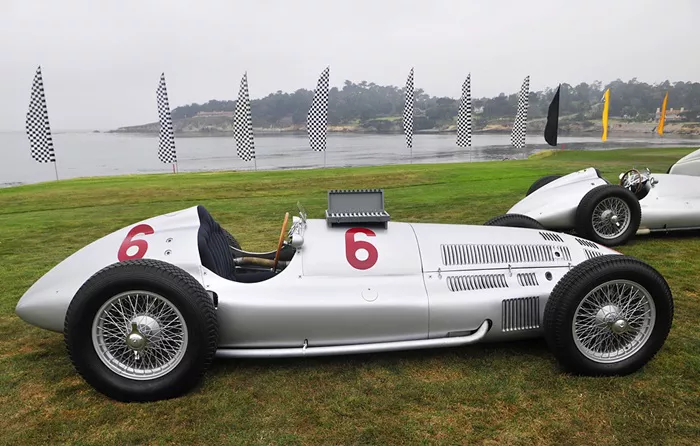The Mercedes Benz W154 is one of the most iconic racing cars from the golden era of motorsport. This car represents the innovation and craftsmanship of Mercedes-Benz during the 1930s, a period when the company was pushing the boundaries of automobile technology. In this article, we will explore the history, key characteristics, price, and performance of the Mercedes Benz W154, shedding light on why it is still revered today.
History of the Mercedes Benz W154
The Mercedes Benz W154 was introduced in 1938 as a racing car designed specifically for the newly created 1.5-litre Grand Prix class. It followed the success of the Mercedes Benz W125, which had dominated racing in previous years. The W154 was a product of Mercedes’ constant evolution in motorsport, aiming to keep up with its competitors such as Auto Union, which also had a strong presence in racing.
The W154 was used extensively by Mercedes in Grand Prix racing, participating in events like the 1938 and 1939 European Championship. This car was one of the leading vehicles of its time, helping establish Mercedes Benz as a dominant force in motorsport.
Key Characteristics of the Mercedes Benz W154
The W154 was a marvel of engineering. It featured several advanced characteristics that made it stand out from its competitors.
1. Engine and Powertrain
The Mercedes Benz W154 was powered by a 3.0-liter V12 engine, which was a significant improvement over previous models. The engine produced around 480 horsepower at 5,600 rpm, giving the car remarkable speed and acceleration for its time. The V12 engine was mated to a 4-speed manual transmission, and the car’s overall design allowed for efficient power delivery to the rear wheels.
2. Lightweight Design
One of the key features of the W154 was its lightweight construction. Mercedes engineers used advanced materials to reduce the car’s weight while ensuring structural integrity. The car’s body was built using aluminum and magnesium, which kept the weight down but did not compromise durability. This was crucial in achieving high-speed stability and agility on the track.
3. Suspension System
The suspension system of the W154 was designed to provide maximum handling and stability during high-speed turns. It featured a double wishbone front suspension and a De Dion rear axle, which were uncommon for racing cars of the era but allowed for improved control and balance.
4. Aerodynamics
Mercedes-Benz was ahead of its time when it came to aerodynamics. The W154 had a sleek, streamlined body shape that minimized drag. The car’s aerodynamics allowed it to achieve high top speeds while maintaining stability, an essential feature in racing.
Price of the Mercedes Benz W154
As a rare collector’s item today, the price of a Mercedes Benz W154 can vary significantly depending on the condition and history of the vehicle. During its time, the W154 was an expensive car to manufacture and purchase. Given its rarity today, if one were to find a Mercedes Benz W154 on the market, it could command prices upwards of several million dollars.
The exclusivity and historical value of the W154 add to its appeal among collectors and automotive enthusiasts. Its status as a racing legend makes it a valuable asset in any high-end automobile collection.
Performance of the Mercedes Benz W154
The W154 was a powerhouse when it came to performance. Despite being built over 80 years ago, the car’s performance figures were impressive, especially for its time.
Top Speed
The W154 was capable of reaching top speeds of over 200 km/h (124 mph), which was extraordinary for its era. This high top speed was achieved thanks to the car’s powerful V12 engine and aerodynamic design, making it a formidable contender in any racing event.
Acceleration
Acceleration was another key strength of the W154. With a power-to-weight ratio that was ahead of its competitors, the W154 could accelerate from 0 to 100 km/h (0 to 62 mph) in just a few seconds, an impressive feat for a car from the 1930s.
Handling and Stability
The Mercedes Benz W154’s handling and stability were second to none. The car’s suspension system allowed for precise cornering and a smooth ride, even at high speeds. The combination of the car’s light weight, aerodynamic efficiency, and advanced suspension made it a joy to drive on the race track.
Mercedes Benz W154 in the Modern Context
Today, the Mercedes Benz W154 is a symbol of Mercedes-Benz’s racing heritage. Its legacy continues to influence the design and performance of modern Mercedes-Benz cars. The technology and engineering advancements seen in the W154 were foundational for the brand’s future success in motorsports.
Collectors and car enthusiasts prize the W154 for its historic significance, and it remains an important piece of automotive history. The Mercedes-Benz brand continues to produce vehicles that push the limits of performance, design, and innovation, much like the W154 did in its heyday.
Conclusion
The Mercedes Benz W154 is a testament to the brand’s commitment to excellence in both engineering and design. From its powerful engine and lightweight body to its aerodynamic shape and high-performance capabilities, the W154 set new standards in racing cars of its time. Though no longer in production, the W154’s impact on the automotive world is undeniable, and it remains a sought-after classic among collectors today.

